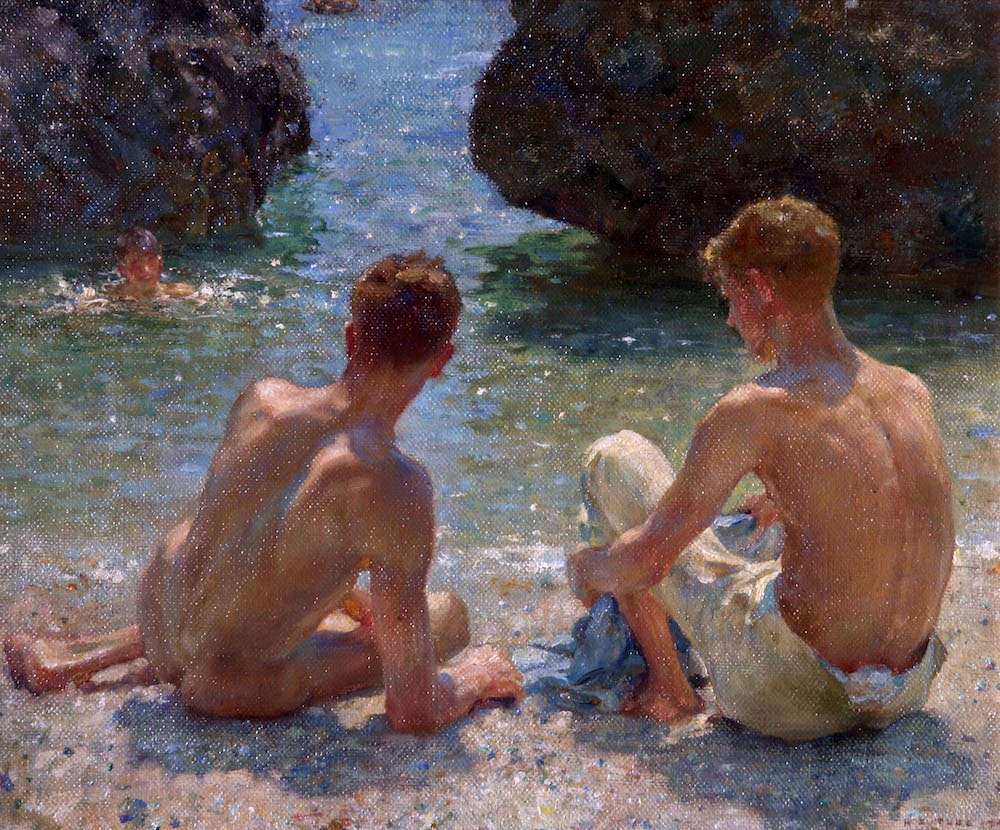I am in St John, in the middle of eating a small lunch of grilled ox heart, green beans and pickled walnut when one of the magazine’s junior staff, Sebastien, appears at my table, a compelling vision in a pair of remarkably tight jeans.
“Sebastien! The devil hath power to assume a pleasing shape,” I say although I doubt his education at a former polytechnic extended to Shakespeare.
“The Editor wants you to check out the Queer British Art show at Tate,” says Sebastien flatly.
I sigh.
“For God’s sake, what can I learn from such a show? I practically invented the dear sods with my ICA show Who Needs Love Like That? Gay Art has Ivan Kurator’s imprimatur seared on its buttocks.”
He looks at me dumbly. Clearly exhibition history is a module lacking in the office induction pack. Annoyed, I make the young fellow pay the bill and we hail a black taxi. Through the journey, I gently but firmly lean into my colleague, thinking of Aeschylus’s marvellous line about the “devout union of the thighs” between Achilles and Patroclus. But the little thug doesn’t say anything until we are well into the depths of Tate Modern and I’m scrambling to think of anything interesting to say about a photograph of Wolfgang Tillmans in his underpants.
I gently but firmly lean into my colleague, thinking of Aeschylus’s marvellous line about the “devout union of the thighs” between Achilles and Patroclus
I am ready.
“Okay, Seb dear boy. Write down some of my thoughts…”
“This is the wrong show. Wrong Tate,” he interrupts.
“For god’s sake, young chap, Wolfgang is definitely a backgammon player. I included him in my seminal show for Kunsthalle Mörfelden-Walldorf, Oh L’Amour”
“No, we’re at the wrong Tate.” He looks at his phone. “It definitely says Tate Britain on the email I was sent.”
After another black taxi ride we reach the other Tate.
“Have you ever thought of Uber? We could save a fortune,” says the buck as we stride into the Hockney exhibition.
“Brexit means Brexit means black taxis,” I snap back at him. I gaze at the pert bottom that is most definitely the focal point of Peter Getting Out of Nick’s Pool for me.
“Marvellous how all those wiggly white lines look like dancing arses isn’t it? He really was a proper friend of Dorothy,” I observe to my companion, but he’s squinting at his phone again.
“Wrong show,” he says.
“But this is now truly ridiculous. Hockney was the key artist in Ship of Fools, my group show that toured the West Midlands in 1988. It culminated in a tremendous hang of Hockney’s shower painting Domestic Scene next to Francis Bacon’s 1953 painting Two Figures. Now of course, wrestling isn’t necessarily only for the fruitcakes but let’s face it, those fellows aren’t engaging in a double-nelson for the fun of it….”
As I am discoursing about the mysterious arts of curating and the follow-up show I did titled A Little Respect, he leads me out of the Hockney exhibition and into what looks like a dispiriting hang of Tate’s storage. I look at a rather insipid painting by Edward Burra.
“But hold on,” I cry. “Edward Burra! He was only dear friends with his companion Billy Chappell. What’s he doing in here? Like me, Burra was a confirmed bachelor. We’re the type of chaps who play with a straight bat, albeit perhaps on both sides of the wicket occasionally. You get my drift, finocchio? Although come to think of it, I’ve never really noticed the thong and muscular buttocks on that soldier before in this Burra work…”
I squint at the painting. Perhaps the curators know something I don’t, but I severely doubt it.
“Erm, Ivan,” the lad pipes up, reading the small entirely unnecessary booklet that the tremendously muscular African gallery guard gave to us on entering. “It says here that the term ‘queer’ is more complex than you might think. It’s all about liberating us from our siloed sexual and gender identities and letting us be fluid. It’s also recapturing an abusive term and changing it into something affirmative. Straight artists can be queer. Gay artists don’t have to be queer. As Derek Jarman said, you need to understand that sexuality is wide as the sea.”
I have literally no idea what he’s talking about but his words fall over me like forbidden fruit. I feel liberated. Pushing him aside I run towards the guard and leap joyously into his surprised and outstretched arms.
